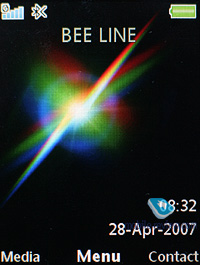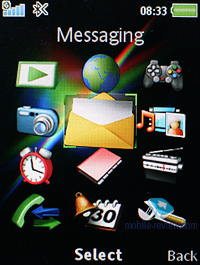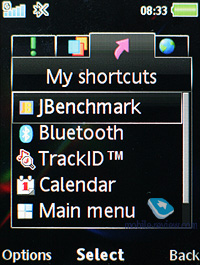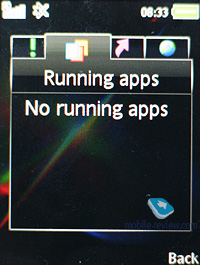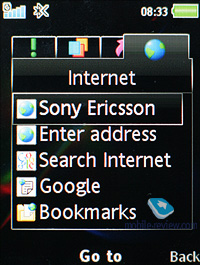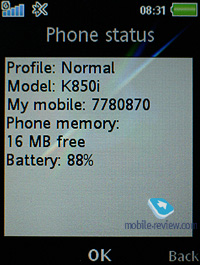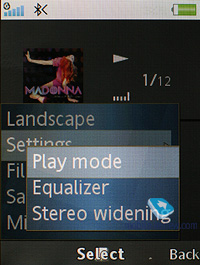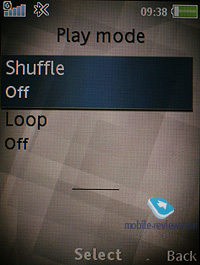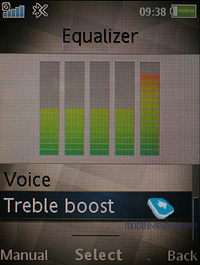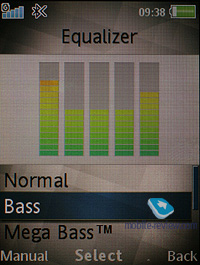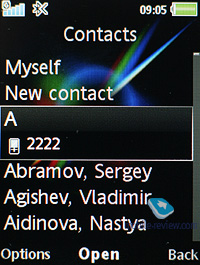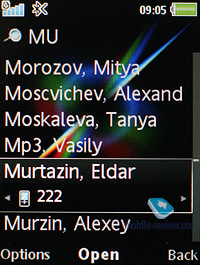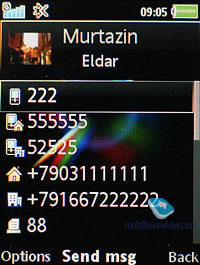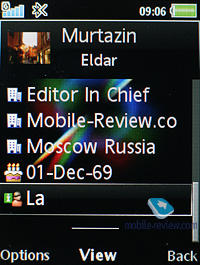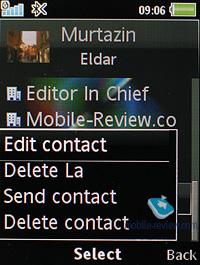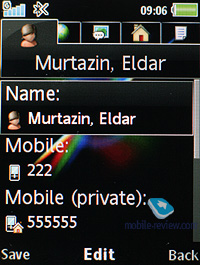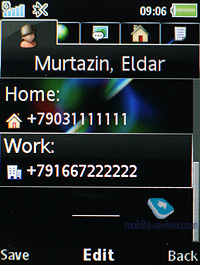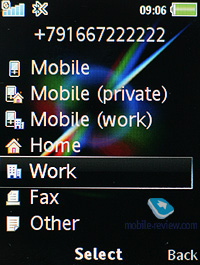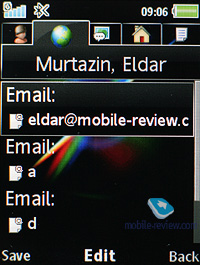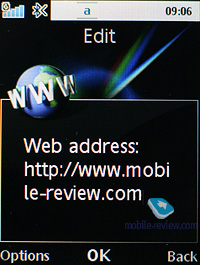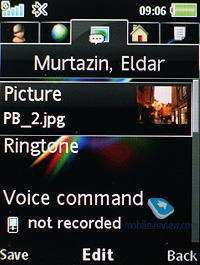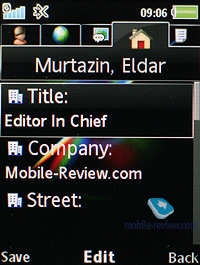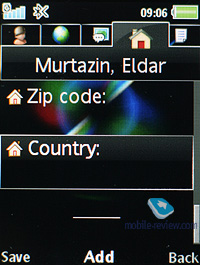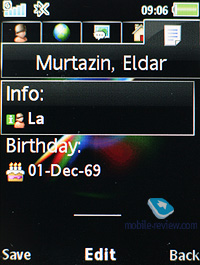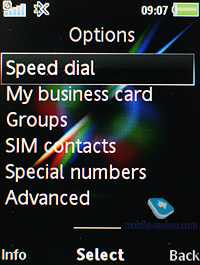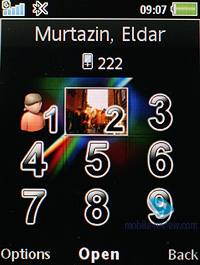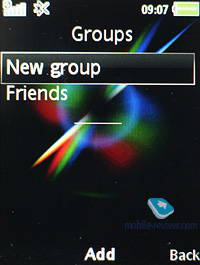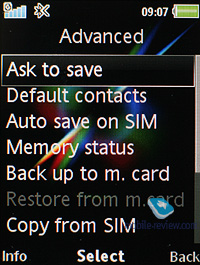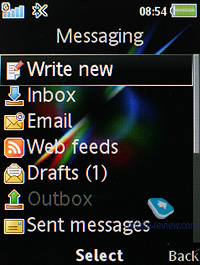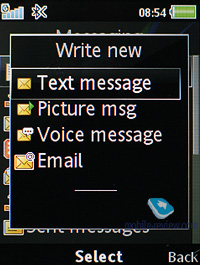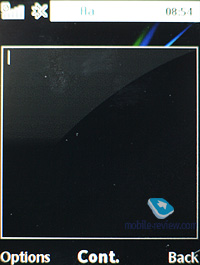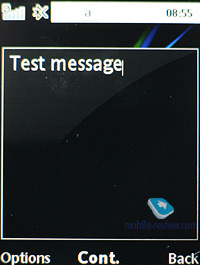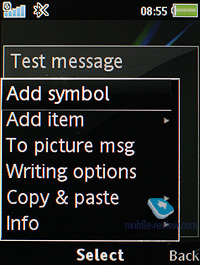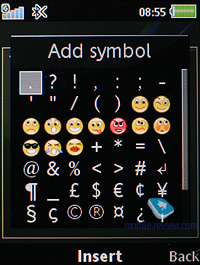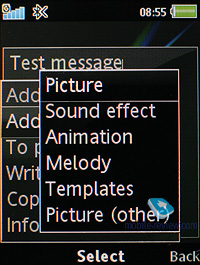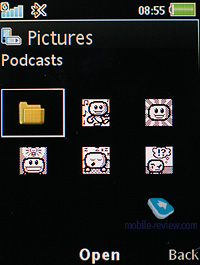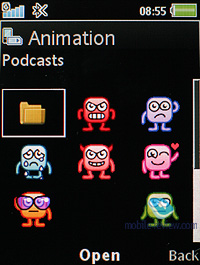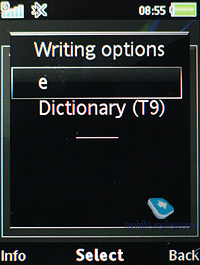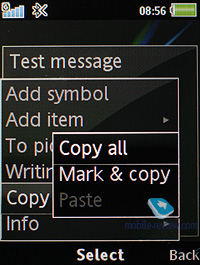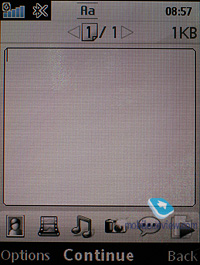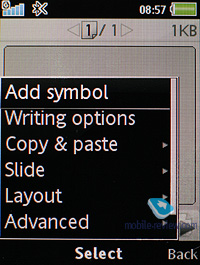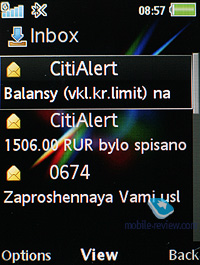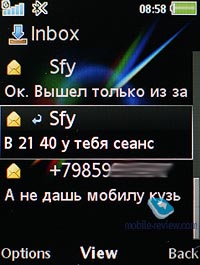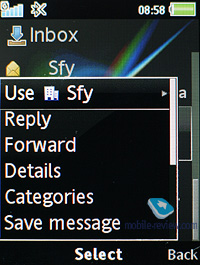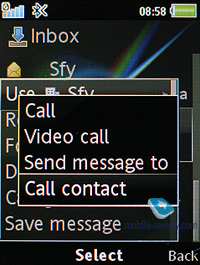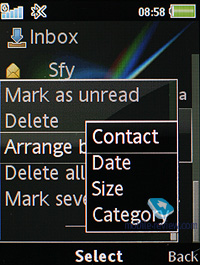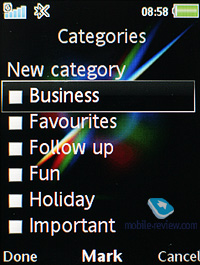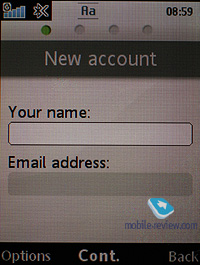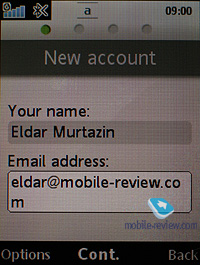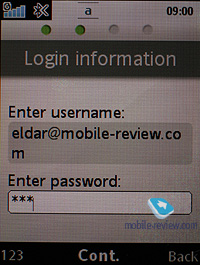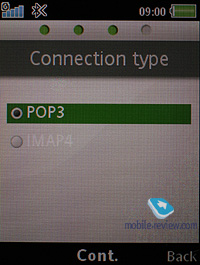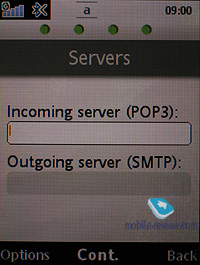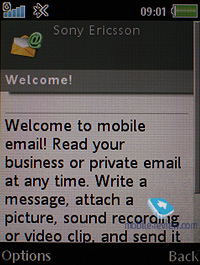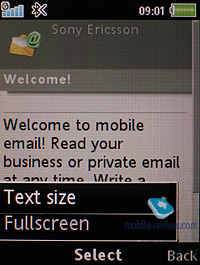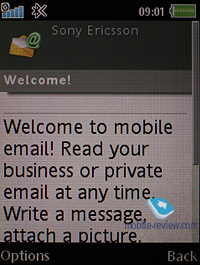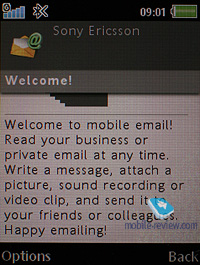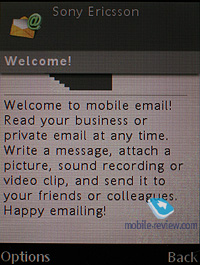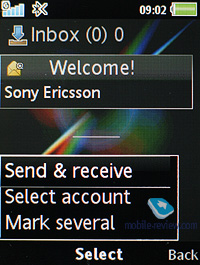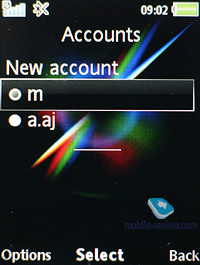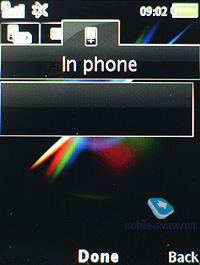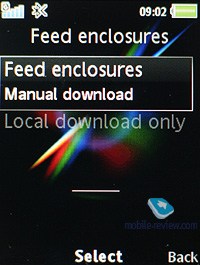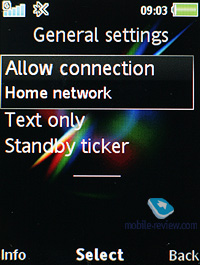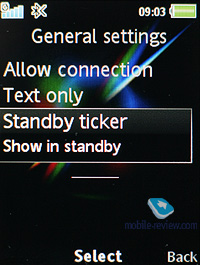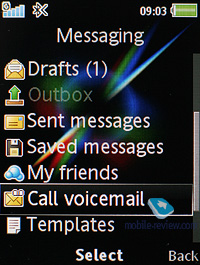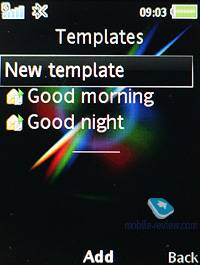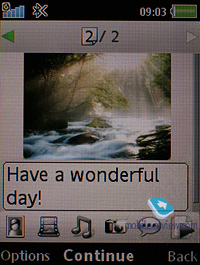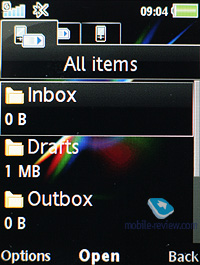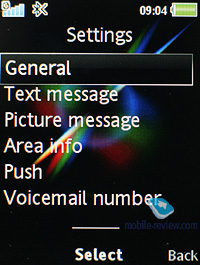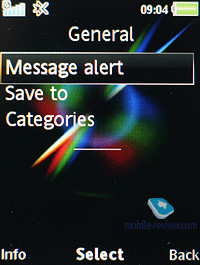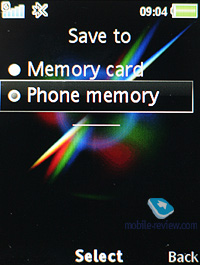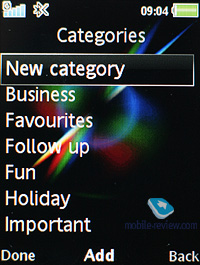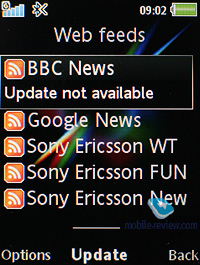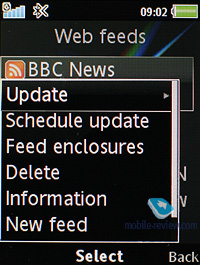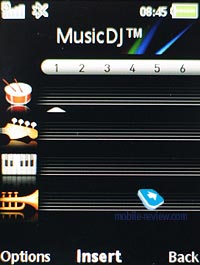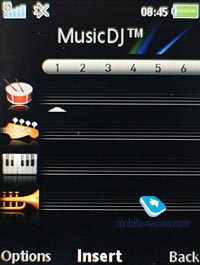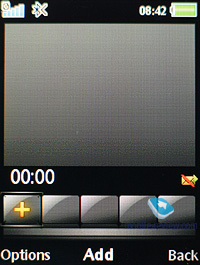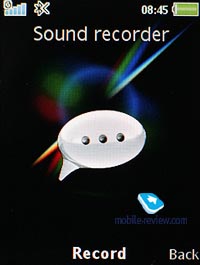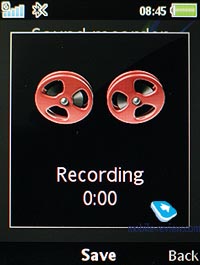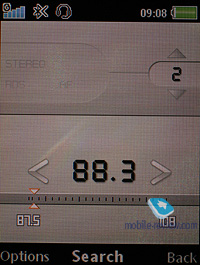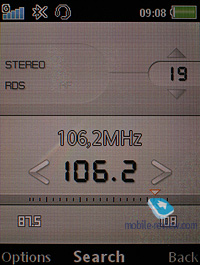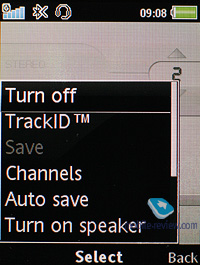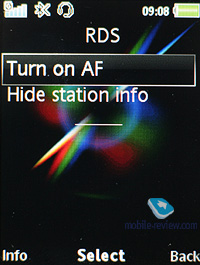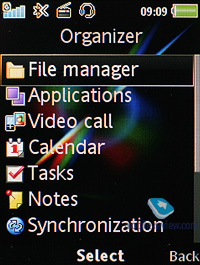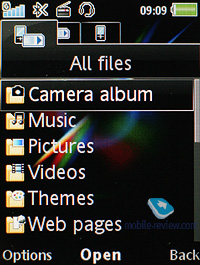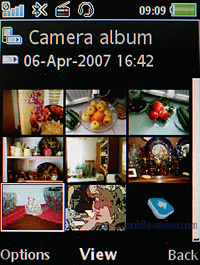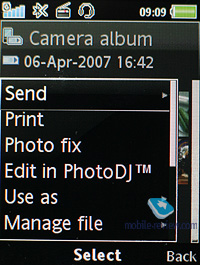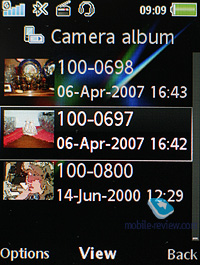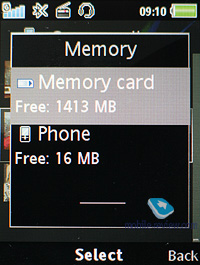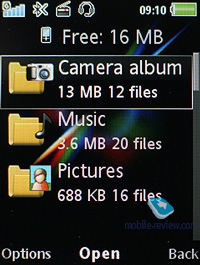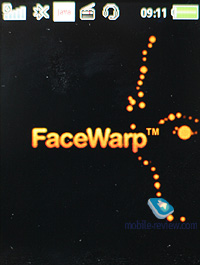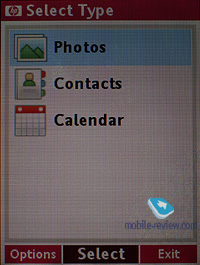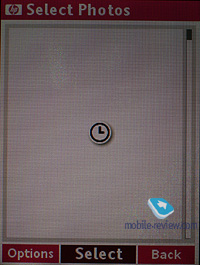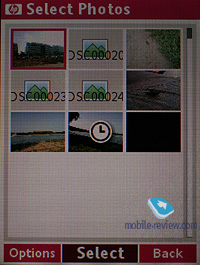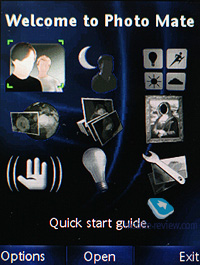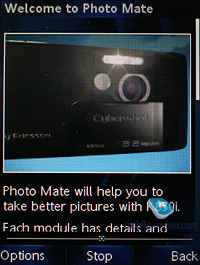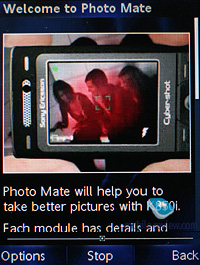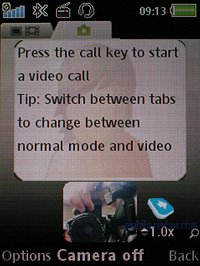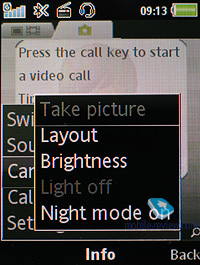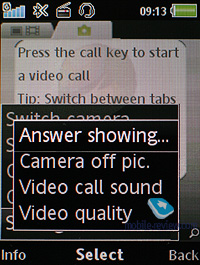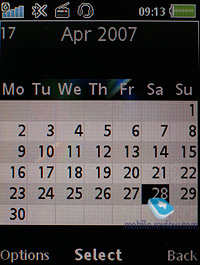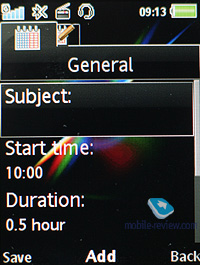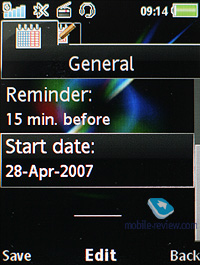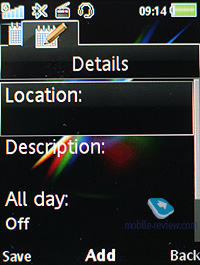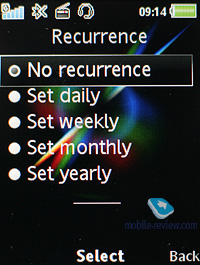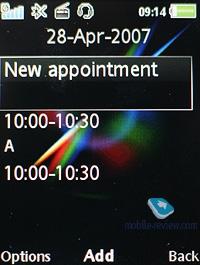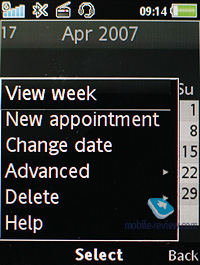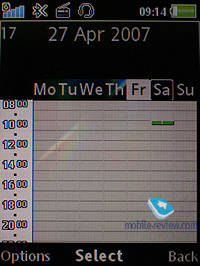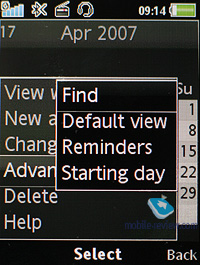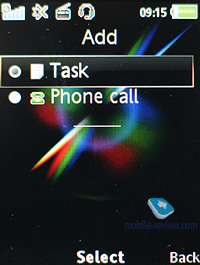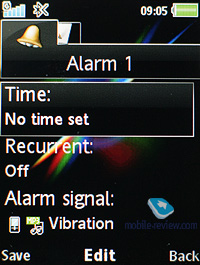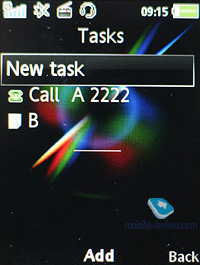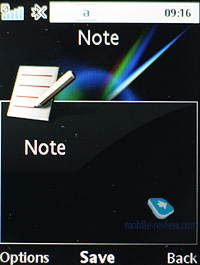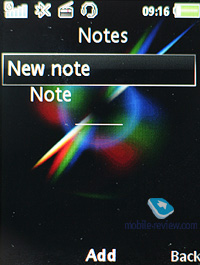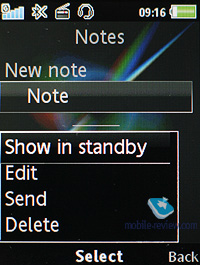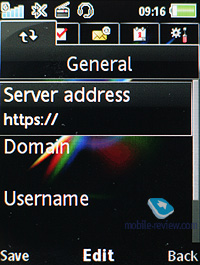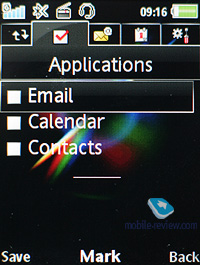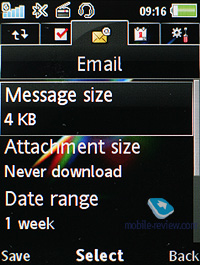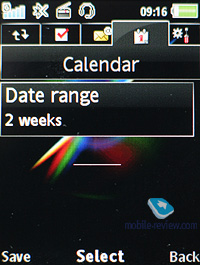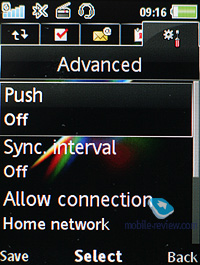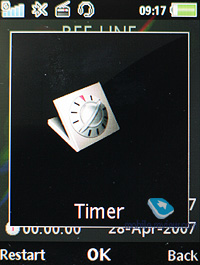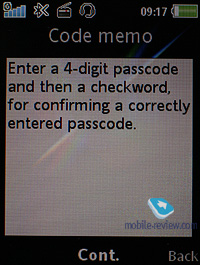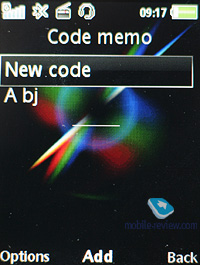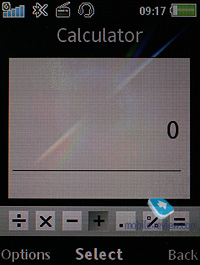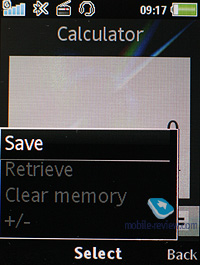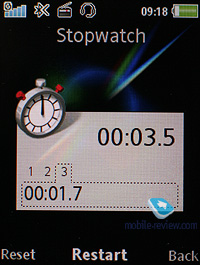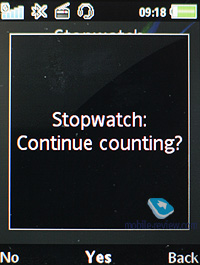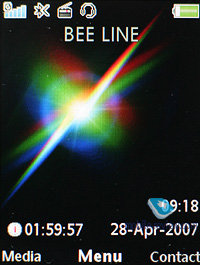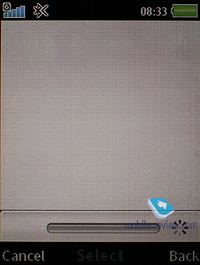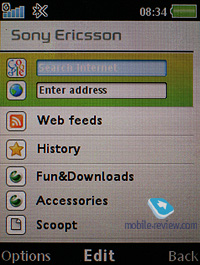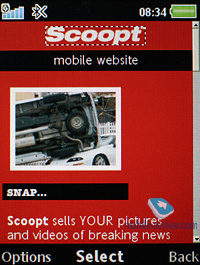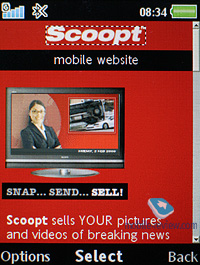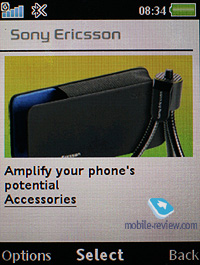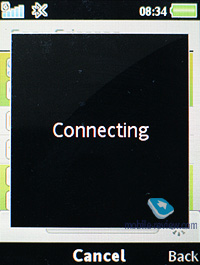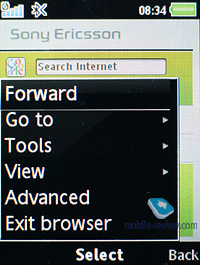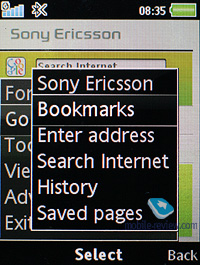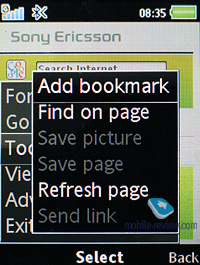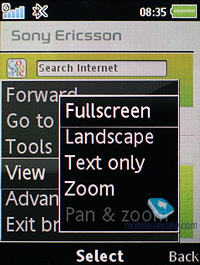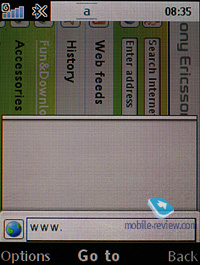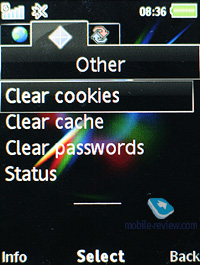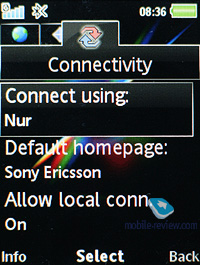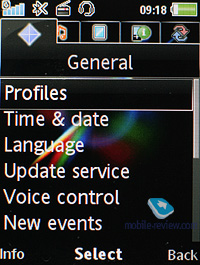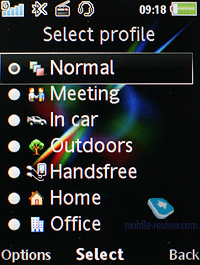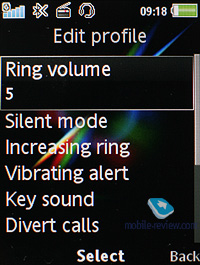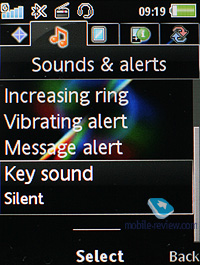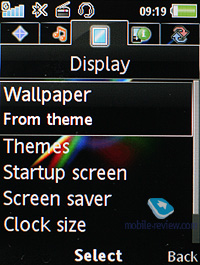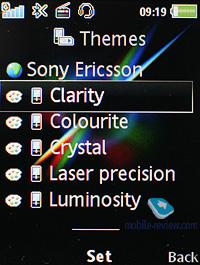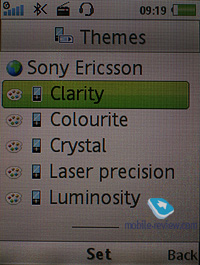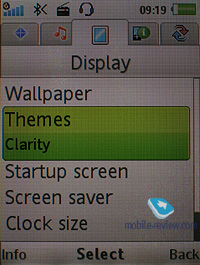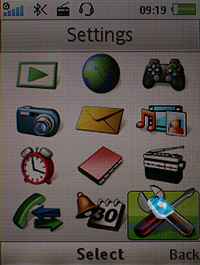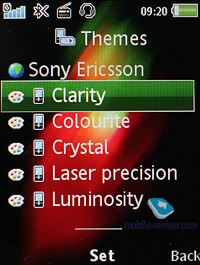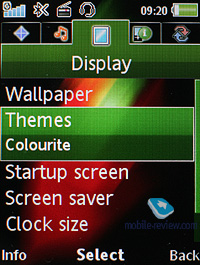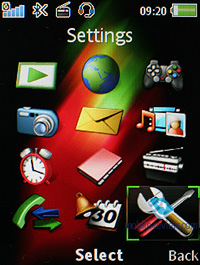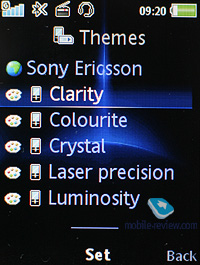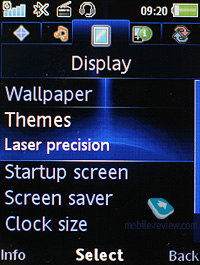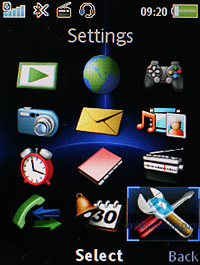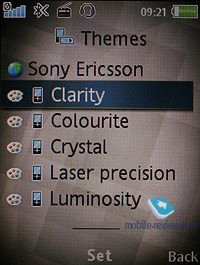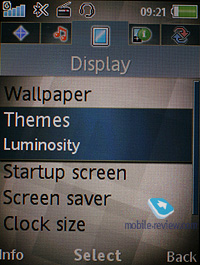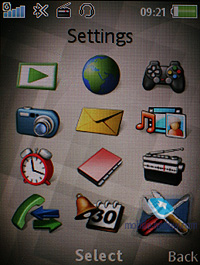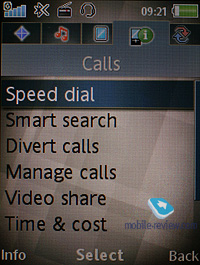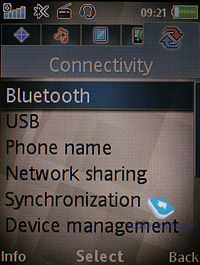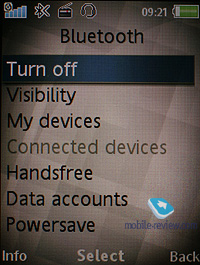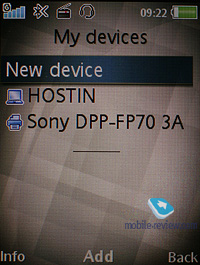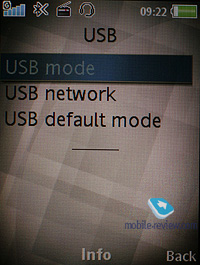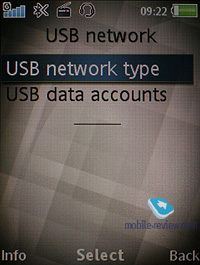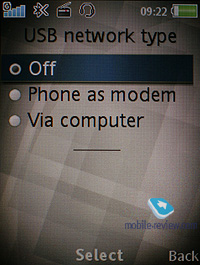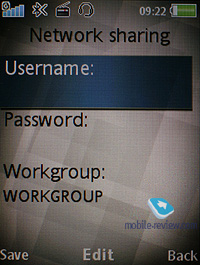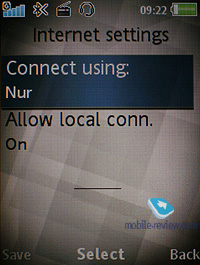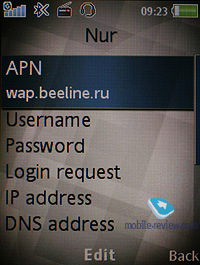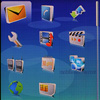|
|
Software features of Sony Ericsson A200
Table of contents:
- Interface
- Themes
- Media
- Phonebook
- Messaging
- Call list
- Entertainment
- Radio
- Organizer
- WAP
- Settings
- File manage
- Smart Search
- Brief list of differences between A200 and A100
- Impressions
In order to not go over the same basic features over and over again in our write-ups, we have decided to compose a stand-alone review of the A200’s core functionality. Soon enough, we will also post a comparison between Sony Ericsson’s A200 platform and Nokia’s S40 5th edition.
As always, here is a thing for you to take note of – some features listed in this write-up have much to do with hardware, as well as software. For instance, some phones may not come with an Infrared port or FM-radio module. Keep this in mind and look for reviews on specific devices. This article is the breakdown of the platform’s core functionality, which is composed so as not to go over the same thing again in our reviews.
Interface
You will know the interface straight away, for it is similar to other Sony Ericsson models. The main menu pops up before you as a grid consisting of 12 icons. Shortcut number navigation is on the A200’s spec sheet as well – you can bind shortcuts to most menu items, that the handset comes pre-installed with, as well as your own applications and files. That’s a big leap forward since the A100 platform.
Another change is represented by three soft-keys, which can’t be reassigned in standby mode, just like in Nokia’s phones. In most menus, the third key stands for the most typical action, but doesn’t speed any thing up, really.
Text input has remained on the same comfort level, so, pressing the "#" key brings out a list of the available languages, and you can easily switch between them whist typing.
Apart from traditional vertically arranged sub-menus, the maker has provided subject-based horizontal tabs. It means that while viewing a list of the dialed numbers, one can see not only the dialed numbers, but in the same time (by leaning the joystick horizontally) switch between missed and received call tabs. In the phone menu, this kind of navigation is provided anywhere possible, and it makes for a much better usage experience. The menu ergonomics are quite good in this phone. I also have to note that such horizontal tabs appear in Phonebook, Settings and other menu items as well.
Activity Menu is the standard Sony Ericsson fare. The first three tabs display various events, like missed calls, memos and messages – actually all of this can be found in the first tab. One can disable Activity Menu for these events as well – in this case pop up windows, reminding of a certain event type will appear on the screen. The third tab features the shortcuts, which you should set up yourself. And the added fourth one contains links to the most frequently used applications and resources – and the top of this list is claimed by Google search.
The second tab is the most interesting, since it appears to be some kind of a task manager, featuring the list of all currently running applications. The user is able to have up to eight Java applications launched (in fact, there are no definite caps) simultaneously and is able to switch between them. This may come in handy, in case you use an ICQ-esque mobile client, which should be constantly online, and at the same time want to play a Java game. Up to now, counterparts to this solution by other manufacturers haven't been announced.
Back to the table of contents >>>
Themes
The device fully supports flash wallpapers and themes: they only affect the colour scheme and menu frame, rather than its layout or design.
Back to the table of contents >>>
Media
One of the major novelties coming along with the A200 is the Media section, which is some sort of a gallery, comprising of different types of multimedia content. Whereas Nokia-branded phones originally had this content thrown into the Gallery, Sony Ericsson was classifying it, but now it is a thing of the past. Undoubtedly, you still can browse separate folders from the file manager, but the maker assumes that Media is the best way for viewing and categorizing multimedia contents.
This item’s menu is in keeping with the Sony PSP trademark style – the same colour, similarly designed icons, which look different from those found in the rest of the menus. As I see, such approach is legitimate only when the maker wants to underscore some solution’s novelty and get consumers interested. Otherwise, applying a different style to particular menus is just worthless. Actually, the resemblance between Sony Ericsson- and Nokia-branded solutions is now so striking, while cross-adoption has become so obvious, that it can make people start wondering. With its S60, Nokia has also come up with a stand-alone section sporting a unique design for accessing all core features (available only in the Nokia N95 these days). And now, Sony Ericsson makes its move, focusing on multimedia features alone.
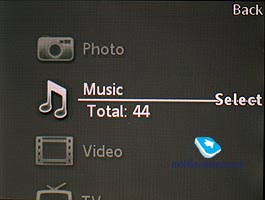
This section provides access to:
- Photos and images;
- All music files;
- Video;
- TV shows for models equipped with DVB-H receiver;
The section’s design doesn’t change throughout the range, as well as the number of items in the main menu. In the settings menu, you can choose between album or portrait display layout, however, all motion sensor-armed devices can enjoy the auto display rotation feature. Long story short, you turn the phone on its side and, after a small delay, the picture rotates as well. But in my opinion, it won’t be of any real use.
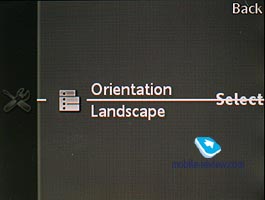
Let’s take a closer look at every section; thankfully there is much to talk about. So, the first item we’ll delve into is Photos.
Photos. Having opened this menu, you will see another menu containing such items as Latest photo, Camera Album, Favorites, Images and Podcasts. The latter might seem out of line here, since podcasts normally feature audio information. But, this is the first place we come across the organization of Media – it is tailored to folder structure and file tags. That is, if you have a folder for podcasts in the camera section, then, you feel comfortable this way, so this item will pop in the menu as well. It is quite convenient, in a way – thankfully, the Podcasts folder is also found in the handset’s music section. By arranging folders, you can shape the second-level menu in Media, but there is a significant limitation to it – the A200 platform identifies only known names and file types with tags, meaning that an empty folder or a directory with some unrecognizable contents in the camera section won’t be displayed in the general list.
Now, the current date is getting to be the centerpiece in the data sorting systen. Camera Album item features a vertically arranged list with a thumbnail for the current month’s first photo. This menu sorts snaps by month, different years are separated from each other. Basically, this is a pretty convenient way to browse the menu, which has every reason to exist. Getting thumbnails onto the display takes some time, especially if you have all your data stored on the memory card, and the number of files is way above a thousand. But, time here is not that crucial, as the A200 saves full-size shots, rather than changing them to shrunken variants.
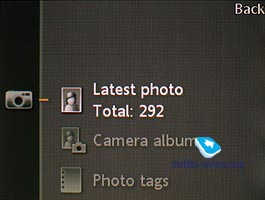


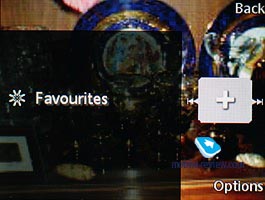

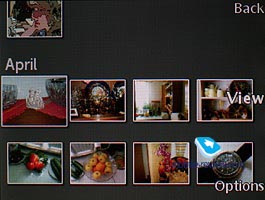

A new feature introduced in the A200 platform is the ability to create tags for photos – by pushing the navi-key down, you can add any shots to Favorites, and while it will become available in that category, physically it remains in the same folder. When you delete photos permanently, those of them featured in Favorites will also disappear, beware of that.
The simplest way to mark some snaps as Favorites is like this: you just press the button down. But, in case you want to apply text onto it, then you can take advantage of such an option in the menu, add your own comment and pick one of the 15 icons. This categorization option is pretty straightforward and allows bypassing the A200’s date-based sorting.
Those who can’t take this type of menu organization, still can make use of the good old file manager, which enables you to browse contents of any folder, including the one with snaps, nothing new there, though.



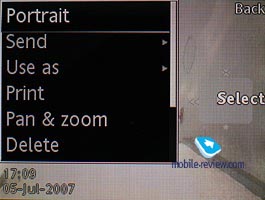
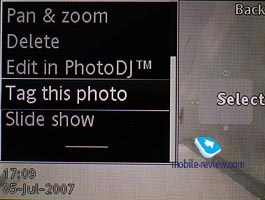

While navigating through the photo gallery, it takes the A200 some time to make snaps crisp. But it is okay, since it is not a rare occasion when photos are heftier than 1 Mb.
Listing the new features, we can’t overlook X-Pict Story, which is a sort of slide-show (not for all A200-powered models). You pick one of the four moods, plus there is sound-disabled mode. So, depending on the selected mood you get unique effects and music accompanying the slide-show. Unlike the Nokia N95, where there is no way to alter music, delay between slides or effects. Most people who got a chance to play around with this mode in the A200 came out satisfied. Generally, Multimedia Viewers and the likes are no longer required – the handset easily does the job on its own.
Music. There was a lot of noise around this aspect – whether it is fine to deem the player found in Media Walkman 3.0, or it is a downgraded edition. Perhaps, both camps have the truth on their sides. Starting with A200 platform, the way the music player is treated has changed substantially, so now we are back to the Sony Ericsson K750i/W800i. The core player functionality built into the Media section won’t differ throughout the portfolio; however the Walkman series will have some extra goods onboard. As of today, it is so evident, as we have seen very few A200-powered handsets. But, let’s take a look at the Sony Ericsson Z750i/K850i/W910i. With the vast majority of options comparable (for example MegaBass is available on all three), the music-minded W910i sports the SensMe feature on top of all that, which is missing on the other two handsets. Pretty much the same thing will keep happening in future as well.
Speaking of the most crucial differences from Walkman 2.0, we need to highlight DRM 2.0 and MTP support, which removes all obstacles on the way of direct music transfers from Windows Media Player.
The A200 locates all files and directories on the memory card and obtains necessary info from ID3-tags. Supported audio formats - MP3, AAC, AAC+, E-AAC+, WAV, WMA and m4a. No bitrate limitations for MP3 files, also, you can upload VBR tracks. However,the makers themselves recommend using tracks at 192 Kbit/s.
The music library stores all your tracks classified by:
Artist – the list of artists in alphabetical order, fast search by name is available;
Albums – sorting by album name, search is also enabled;
All tracks – general list of all tracks, sorted by track title, or file name, if no ID3-tag is available;
Genre – sorting by music style, for example Hip Hop, Jazz, Blues and so on;
My Playlists – user-created playlists, that can be composed either on the device itself or via PC, when browsing memory card contents in USB Mass Storage mode; the K850i identifies them upon library update as well.
Unlike the second version, transitions are horizontal, yet styled in a different way. But, this doesn’t deliver any hardships. Basically, any item is only a few touches away, first letter search is enabled in every list.

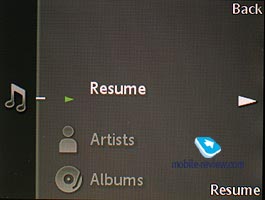
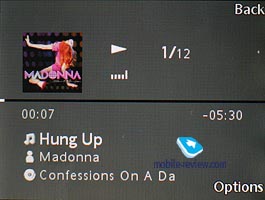
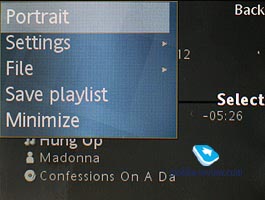
Both shuffle and repeat (one track or all) modes are available, as well as progressive fast forward, which increases the pitch when you tap and hold the button. The standard, basic edition of the player, doesn’t allow you to go for visualization, meaning that your only option is album art.
If you have music playing in standby mode, then bringing up the Media section will automatically get you to the player. This is a sort of replacement for the music key for some devices, including the Sony Ericsson K850i.
The sonic experience hasn’t changed for better or worse, being in line with the previous models. The five-band equalizer can be tuned manually; stereo widening option is also available.
Video. This app in the A200 platform is almost no different from the previous versions – progressive fast forward is still at your disposal, as well as full-screen mode, and snapshots. The new amenities, though, include slow-motion playback, when video is played frame-by-frame.
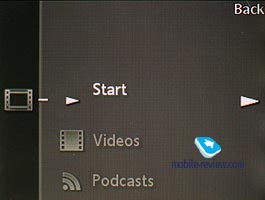

Brief conclusion on the Media section. The philosophy of this section has been adopted from players – it is similarly bent on info obtained from files, has auto sorting by date or tags. With a standard file manager onboard, this is a good option, giving the user some choice. If you can’t live without plain lists, then the file manager is the only way to go; but if you feel like turning to Media, then it is at your disposal. It is a nice update in terms of looks, but functionality-wise it is not a breakthrough by any means.
Back to the table of contents >>>
Phonebook
The A200 platform is capable of storing up to 5000 entries with all fields filled in, and the cap for the number of phone numbers makes 35000. Previously, the A100 platform had 1000 entries and 2500 phone numbers respectively. Such substantial expansion of the phonebook has much to do with some complaints from people claiming that the capacity of 1000 entries was insufficient, so they couldn’t squeeze all their contacts into the phone. I suppose, this is a really small group of individuals, as I can’t think of any person I know with 3000 contacts on the list. Also, the fields for phone numbers have been expanded with Mobile Private and Mobile Work, which means that now there are three blanks reserved for mobile phone numbers. Regrettably, you still can’t alter number type for the available fields, but the manufacturer might implement this ability in future editions.
Like we mentioned above, several phone numbers (up to 7) can be submitted for one contact, as well as address, email, IM number and other contact information. In settings, you can select the required fields, they will be available, meanwhile, the useless ones will not be presented. Contacts can be sorted by fields, including name and surname, but only one input field. Unlike previous models, this time we have dynamics on - handset automatically sorts the list after changes have been applied.
It is possible to assign a custom ring tone and a photo to each contact. On an incoming call, the image and ring tone, or a video clip e will be used. Date of birth field can be synchronized with the organiser, and you will have a chance to specify how many days prior to the event the handset should warn you.
When typing in information, you can scroll between tabs, in the first one you enter phone numbers and categorize them by types. On the whole the organization of this process reminds me of Outlook, and it means comfort in the first place. Voice tags can be added for required phone numbers and names, there can be up to 40 of them. Voice dialing remained the way it was many months ago, it starts looking archaic with all these voice independent recognition software being implemented by the competitors.
The company still follows its traditional beliefs that SIM-card is used only in case of emergency, that’s why the only way to see its contents is to go into a special option in the menu. SIM contacts are not displayed in the general list.
You can create a back-up copy of all entries in the phonebook, which will be stored on the memory card, so that you will have the ability to restore them afterwards.
Contact Groups serve only for mass SMS sending, since it is impossible to bind a custom ringtone or photo for a Group.
Any video clip may be used as Caller ID for a contact in your phonebook.
Back to the table of contents >>>
Messaging
All tools used for managing messages are standard, there are some templates available, and you can come up with some more of your own. The phone’s memory together with the SIM-card is used for storing messages. Chat function is also supported. On the whole, everything is just like any other phone from this company.
Now, there are message categories, which can be manually applied to every message. Then, you can sort messages in the general list by category. There are six of them coming preinstalled with the A200 - Business, Favourites, Follow Up, Fun, Holiday and Important. If you find that these are still not enough, you can come up with your own classes. Generally, these categories will be useful to people who usually store messages on the memory card.
A special message manager allows tossing messages from folders onto the memory card, or vice versa. Moreover, you can pick the default storage place manually, which is a nice improvement.
The MMS implementation is as always great, you can literally create video clips, there are lots of settings and this is one of those things that give SE’s product a cutting edge over its competitors.
The E-Mail client can send and receive e-mails, all sorts of encodings are supported. Emails can be stored on the memory card. There is a separate manager to assist you in moving letters from the folders in the handset’s memory onto the memory card. Previous devices running on the A100 didn’t feature this ability.
In email settings, you can setup separate passwords for SMTP-accounts, this is very convenient. The settings are flexible, support is implemented for almost all encodings, and not only Unicode has been added. Attachments that are supported by the phone are presented as icons in an email’s body. The phone doesn’t recognize office files or PDF, but they can be stored in any directory. The limit for outgoing/incoming email size is set by the network operator. Emails with 6-7 Mb attachments can be sent without any hassle. The phone supports the Push Mail standard. Naturally, send & receive process is carried out in the background.
RSS Feed. The settings for this item are really simple - you just specify the title for feed and its address. The phone will connect and download it without your assistance. You can update only one item, or the whole feed at once. Capabilities of the built-in browser are used for displaying the feeds. Feeds may be updated on schedule. You can enable standby ticker option, displaying headlines of selected feeds. Also, you can setup the application to keep all external links and attachments.
Back to the table of contents >>>
Call list
Up to 30 records can be stored in the general list, all with date and time. The call type icon (missed/received/dialed) is shown next to each entry. Besides this, an additional icon identifies if the phone number is present in the phone book or SIM-card. The list of missed calls can be viewed separately and stores up to 10 entries. In this menu, you can also see the cost and length of all outgoing calls and last call. Navigating through the lists works with the help of tabs and this does save some time.
Back to the table of contents >>>
Entertainment
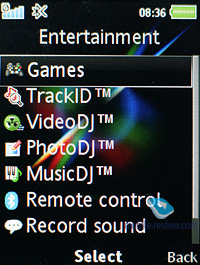
MusicDJ is rather interesting, even though it is a niche solution and there is not much of a chance that this feature will be highly demanded. In the editor, you can create ring tones and edit up to four bands.
An advanced version of MusicDJ is called VideoDJ, it allows editing not only music files, but also adding images and signs. The resulting file is recorded in .3GP format, which can be sent by MMS or Email, or just transferred to another phone.
PhotoDJ editor helps in doing away with red-eye effect, adjusting brightness, contract, sharpness or applying a special effect.
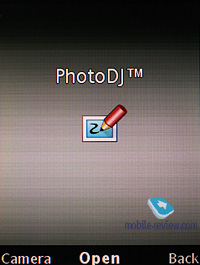
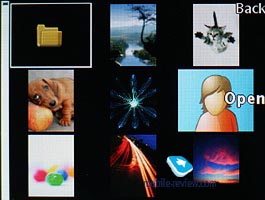
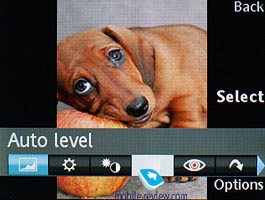


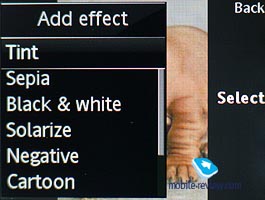



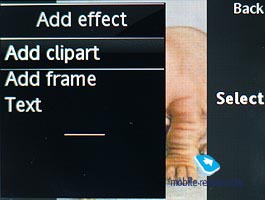

Remote control – ability to control other devices via the phone’s Bluetooth connectivity. It is standard for all phones made by Sony Ericsson.
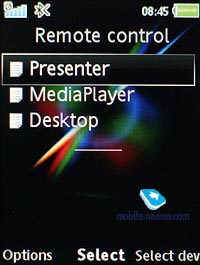
Sounds can be recorded by the Sound Recorder - it allows making clips that can be later used as ring tones. Phone calls can be recorded too, this is done from the context menu, no time limits are set for the Sound Recorder.
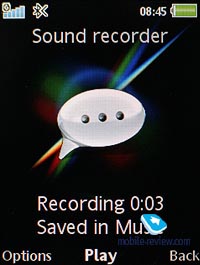
TrackID. This platform has the TrackID service (located in the Entertainment menu), that helps you find out a song title, when listening to it on the radio or recording it via the microphone. Usually, it takes around 3-4 seconds for length, later on, the file gets transferred to the GraceNote server, where it interacts with the huge database. Unlike other systems, here not only can you retrieve the track title, but also buy the song. The service is interesting, due to instant and impulse-driven ability of buying the song you were searching for. It’s hard to say something else about this service.
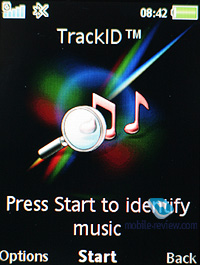
Back to the table of contents >>>
Radio
The A200 platform can store up to 20 FM stations in its memory, auto tuning, as well as RDS are available. The quality of this radio module is no different from other Sony Ericsson offerings – on balance, it is quite good.
Back to the table of contents >>>
Organiser
Organiser keeps a lot of functions underneath. Let’s get Calendar out of the way first. There are three view modes embedded in the A200 calendar: week, month and day. The last option displays the list of all events and memos, in two others you will see highlighted time or day. You can switch to required day and year, or the month. So, everything is pretty simple, just as the schedule input is. You get the ability to name the event, define the place where it will take place, set length and setup the reminder (before or right at the start of the event). Recurrent event support is also onboard. Types of reoccurrence are: daily, monthly and yearly. Reminders work even if the phone is turned off as well, unless you disable this function.
To do list in this phone is quite ascetic. There are only two types of events: phone call and reminder. On the other hand, this is really enough, simplicity has its own advantages.
The phone has fully-fledged search enabled, set up for the calendar: you specify the search line (word or part of it) and after a while, you will see all events that match this criteria. The function is quite speedy, even if the organiser has more than 100 entries; fast switching to the event from the search window is supported.
Notes. The phone supports notes entry, though they are limited in length. The name of the note you see on the list will be the first word entered. This is not always convenient, since you will have to think of the first word that would tell you what the note is all about.
Alarm Clock. Now you have access to five alarm clocks, and each of them can be set up manually. They can work in definite week days. Besides, the ring tone for the alarm clock. You can also select a small note and picture, they will be displayed when the alarm clock goes on. Any music file can be assigned as the alarm tone.
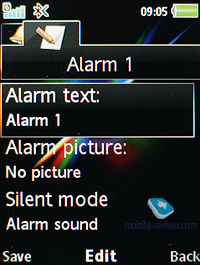
Stopwatch/Countdown. Here everything is quite standard, although the same can be said of the stopwatch that has intermediate times function. The phone has a special application for storing secret codes, which was a huge success in previous models, well, standard calculator is onboard too.
Code memo – store all your passwords in one place and then lock them with a special password.
Video call – apparently, it is for video calls within 3G networks, which use the forward-facing camera.
Synchronization – apart from already long in the tooth SyncML synchronization option, the A200 platform also supports Exchange ActiveSync. All you need to do is enter the server address, account settings and pick the applications you want to synchronize (mail, calendar or contacts). Also, you can adjust mail settings, so as to limit the maximum size, enable/disable upload of attachments and set date range. Push mode can be enabled. Unfortunately, the device doesn’t support any type of folder structure and can’t solve any conflict situations. For example, when you already have a message from someone, and the server has just the same letter, well, you will end up with two letters. The same holds true for contacts as well.
Back to the table of contents >>>
WAP
The browser has a separate menu item, the version is 2.0 (wap 2.0, the browser itself is NetFront 4.3), it supports secured connections which is quite important in case you are using electronic transactions. New wallpapers, themes and ring tones can be downloaded right away – all this is available at the original web-site.
The standard browser for Sony Ericsson phones is NetFront, which supports one-column web pages display and HTML. One of the best things about it, is the ability to create folders with files and bookmarks. The browser is considered to be one of the market’s best offerings, but limited phone resources do it no favors. On the whole, those using the Internet constantly should consider buying a PDA or laptop, since fully-fledged Internet access is not an ultimate must-have for this device type. At the same time, RSS Feeds support is great, it allows using the phone for reading news, announcements and articles on the go in a convenient fashion.
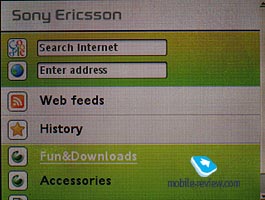
The A200’s support for flash is limited to its browser alone, and any swf-clip will start up in the browser’s window, which is not always a good thing. The numeric keys do nothing in this mode, so games will be pretty much useless. I would rather call this type of support for flash “partial”, not to say “substantially shrunk and meaningless”.
HTML pages that contain advanced formatting or exceed 500kb in their size will not be displayed. On the whole, standard browser is fine, but usage of Opera Mini is preferable, since it has got way more to offer.
Back to the table of contents >>>
Settings
This menu stores all settings related to the phone’s operation. In the stand by mode, the clock can be displayed at the bottom (on or off), you can also alter the font size, in case you select big letters, it will be easy to see what time it is, but the font itself becomes a tad transparent.
The new settings include the ability to assign your own video or image for the start up screen. The handset supports local data connections, meaning that while linked up with PC you will be able to use the network established there to upload data onto the phone.
Back to the table of contents >>>
File manager
The A200 platform has a basic file manager, with its help, files can be sorted by various folders, custom directories can be created in the phone’s memory, files can be moved there as well. With or without the cable, the phone can become a perfect storage device, there are no problems with recording your own files, even if they cannot be opened by the phone. Traditional file sorting includes the following options: date, type and size.
Back to the table of contents >>>
Smart Search
Another feature than can be disabled – if you start punching in a number while at the standby screen, the handset will offer you a list of matching entries both from the phonebook and the call list. Moreover, the A200 platform searches not only names, but also letters, which makes for much easier phonebook management. After a month of quality time with it, I really start to miss this feature. As of today, only Samsung offers identical search application.
Back to the table of contents >>>
Brief list of differences between the A200 and A100 platforms
We are not going to go through all the differences and will rather focus on the main points:
- Phonebook – 5000 entries and 35000 phone numbers, two new fields for mobile numbers;
- Smart Search – search for phone numbers with first letters or digits;
- Media – revamped view based on tags and date;
- Exchange ActiveSync – support for this standard enables data transfers between the K850i and corporate services with only a handful of settings;
- Message classification, ability to store all or only selected messages on the memory card;
- MTP protocol for USB-connection;
- Local connection option for accessing the network established on your PC;
- NetFront 3.4 browser, in-browser flash support;
- Shortcuts to own applications;
- Walkman 3.0 provides core player functionality;
- Photos can have custom tags;
- Slow-motion video playback mode;
- X-Pict Story – slide-show mode;
- Support for up to 32 Gb memory cards;
- RSS – offline mode, ticker in standby mode;
Back to the table of contents >>>
Conclusion
Functionality-wise, the A200 platform is a potent platform to the current models, and will remain in power for at least 1,5 years to come. As it stands now, in some departments (multitasking) and support for online-tickers and other features, this platform is beyond competition. However, it has some weak spots of its own, and its major rival is Nokia’s S40 5th edition.
We might also see an intermediate release, an add-on to the A200 platform, which, probably, will go by the name of the A250, but that's down the road. At the same time, the A300 is a fundamentally different platform, building upon all the best smarts of the previous editions, having support for displays with resolutions better than QVGA as its foremost edge.
Related links:
Back to the table of contents >>>
Eldar Murtazin (eldar@mobile-review.com)
Translated by Oleg Kononosov (oleg.kononosov@mobile-review.com)
Published — 17 October 2007
Have something to add?! Write us... eldar@mobile-review.com
|
News:
[ 31-07 16:21 ]Sir Jony Ive: Apple Isn't In It For The Money
[ 31-07 13:34 ]Video: Nokia Designer Interviews
[ 31-07 13:10 ]RIM To Layoff 3,000 More Employees
[ 30-07 20:59 ]Video: iPhone 5 Housing Shown Off
[ 30-07 19:12 ]Android Fortunes Decline In U.S.
[ 25-07 16:18 ]Why Apple Is Suing Samsung?
[ 25-07 15:53 ]A Few Choice Quotes About Apple ... By Samsung
[ 23-07 20:25 ]Russian iOS Hacker Calls It A Day
[ 23-07 17:40 ]Video: It's Still Not Out, But Galaxy Note 10.1 Gets An Ad
[ 19-07 19:10 ]Another Loss For Nokia: $1 Billion Down In Q2
[ 19-07 17:22 ]British Judge Orders Apple To Run Ads Saying Samsung Did Not Copy Them
[ 19-07 16:57 ]iPhone 5 To Feature Nano-SIM Cards
[ 18-07 14:20 ]What The iPad Could Have Looked Like ...
[ 18-07 13:25 ]App Store Hack Is Still Going Strong Despite Apple's Best Efforts
[ 13-07 12:34 ]Infographic: The (Hypothetical) Sale Of RIM
[ 13-07 11:10 ]Video: iPhone Hacker Makes In-App Purchases Free
[ 12-07 19:50 ]iPhone 5 Images Leak Again
[ 12-07 17:51 ]Android Takes 50%+ Of U.S. And Europe
[ 11-07 16:02 ]Apple Involved In 60% Of Patent Suits
[ 11-07 13:14 ]Video: Kindle Fire Gets A Jelly Bean
Subscribe
|
